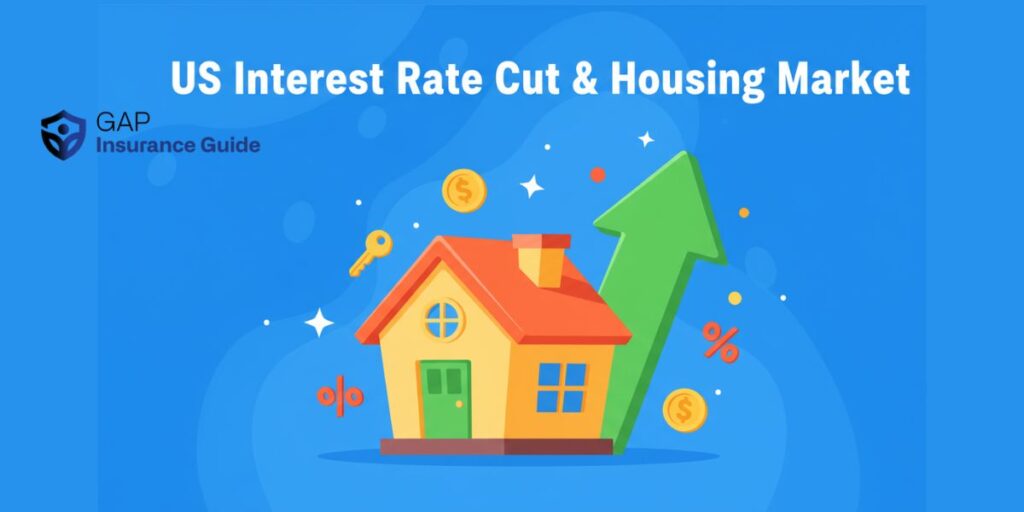For buyers like Aileen in Los Angeles, stubbornly high mortgage rates are not enough to dampen enthusiasm. Even though rates are roughly double what she secured during the coronavirus pandemic, she believes waiting could be costlier.
“If I have the means to get in the market, I might as well get in now, because homes are just going to get more expensive,” she said.
The Impact of Fed Rate Cuts on Mortgages
The Federal Reserve’s decision to cut interest rates has sparked renewed hope for homebuyers. Last week, the average 30-year mortgage rate dropped to 6.35%, the lowest level in nearly a year, according to Freddie Mac. But experts caution that mortgage rates may not fall much further, since banks had already lowered them in anticipation of the Fed’s move.
As Fed Chair Jerome Powell explained, “Most analysts think it would have to be a pretty big change in rates to matter a lot for the housing sector.”
Why Mortgage Rates May Not Drop Much More
Mortgage rates don’t move in direct lockstep with Fed decisions. Instead, they are influenced by banks’ borrowing costs, inflation expectations, and investor demand. If inflation ticks higher, lenders may keep mortgage rates elevated to hedge against future uncertainty, even as the Fed signals caution.
Real estate agent Nicole Stewart of Redfin in Boise, Idaho, said many buyers are expecting a big drop but may be disappointed. “We’ve already seen the majority of what’s going to happen,” she said.
Buyers Testing the Market
Despite limited relief, the small dip in mortgage rates has encouraged some buyers to make offers. Stewart said she wrote four offers and closed three deals in a single weekend this month—far more activity than she’s seen in years.
In Boise, prospective first-time buyer Kristin Carlson said the recent drop brought her “just that much closer to pulling the trigger” on a purchase after years of renting. She hopes to buy soon, before a wave of competition enters if rates fall further.
The Affordability Crisis Persists
Even with a modest decline in mortgage rates, the US housing market remains unaffordable for many. Roughly 80% of current mortgage holders locked in rates below today’s 6.35% average, often in the 3% range during the pandemic. That makes homeowners reluctant to sell, further reducing inventory and driving up prices.
“This market is still a long way from normalizing,” said Julia Fonseca, a finance professor at the University of Illinois Urbana-Champaign.
More Than Just Mortgage Rates
For many buyers, borrowing costs are just one piece of the puzzle. Carlson noted that location, home size, and builder quality weigh just as heavily in her decision. Seasonal factors and lifestyle needs often outweigh incremental changes in mortgage rates.
Signs of Cautious Optimism
Banks see some positive momentum. Matt Vernon, head of consumer lending at Bank of America, said lower mortgage rates are providing modest relief and sparking activity.
“There’s cautious optimism that we’re headed in the right direction,” he said. “It hasn’t erased the challenges buyers face, but it’s certainly got their attention.”
Disclaimer: The content published on Gap Insurance Guide is intended for general information and educational purposes only. We cover topics related to insurance, banking, finance, and trading, but none of the material should be considered financial, legal, or investment advice. While we aim to provide accurate and up-to-date information, we make no guarantees about completeness, reliability, or accuracy. Any actions you take based on our content are strictly at your own risk, and Gap Insurance Guide will not be liable for any losses or damages. We strongly recommend consulting a licensed financial advisor, insurance expert, or other qualified professional before making decisions. Articles may include links to third-party websites, and we are not responsible for their content or practices.
I’m Abhilash, a finance and business content writer passionate about simplifying money matters. I share practical insights on finance, business growth, and insurance to help readers make informed decisions. Through my blogs and articles, I aim to provide clear, reliable, and actionable advice for smarter financial planning and success.



